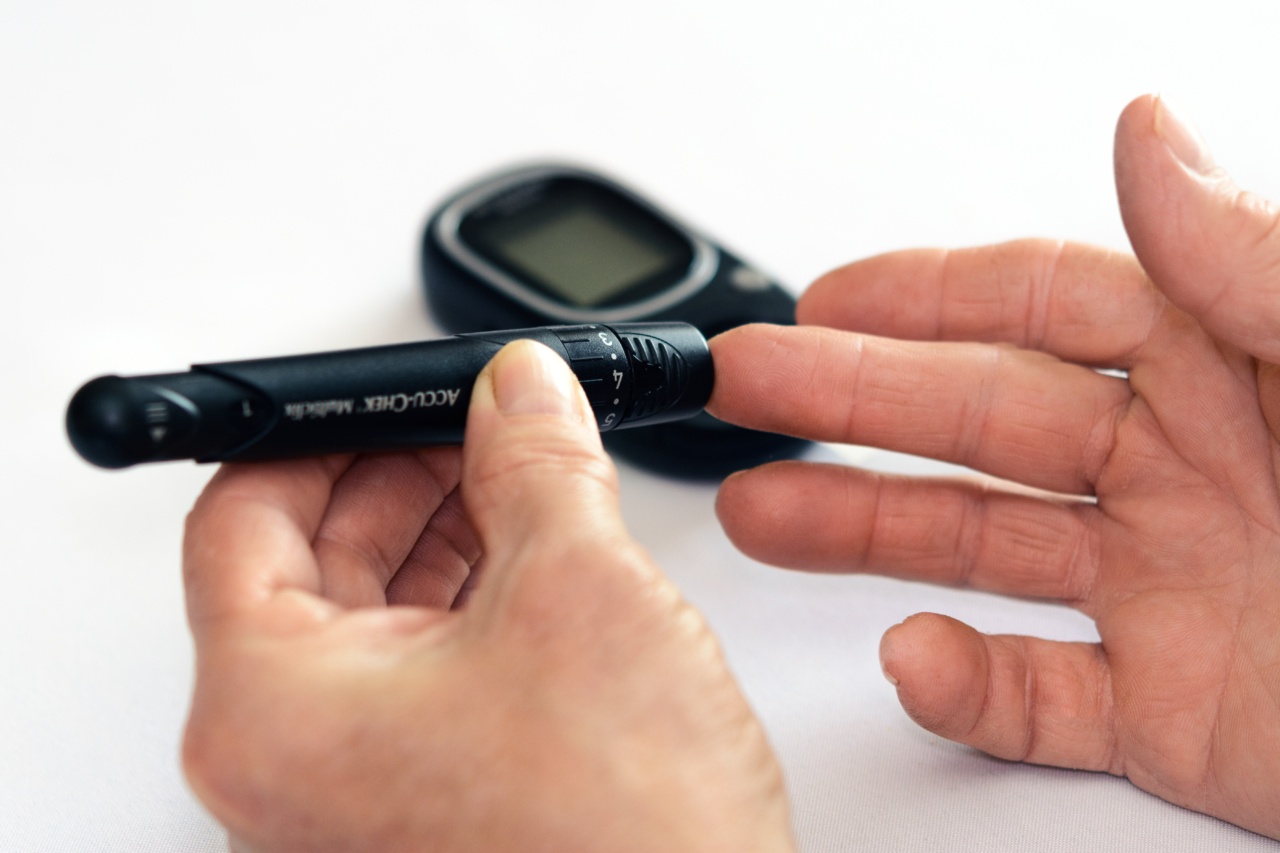Diabetes is a chronic condition affecting millions of people worldwide. It is characterized by high blood sugar levels and can lead to various complications if left untreated.
While many individuals are aware of the common symptoms of diabetes, such as frequent urination, excessive thirst, and unexplained weight loss, there are also certain subtle indicators that often go unnoticed. One such hidden signal of diabetes is irregularities in the toes or fingers. In this article, we will explore these lesser-known signs and their implications.
1. Numbness or Tingling Sensation
One of the early signs of diabetes is a numbness or tingling sensation in the toes or fingers. This occurs due to nerve damage caused by high blood sugar levels.
The nerves responsible for sensation are affected, leading to a loss of feeling or abnormal sensations such as tingling or burning. If you experience this sensation, especially in conjunction with other diabetes symptoms, it is important to seek medical advice to determine the underlying cause.
2. Slow Wound Healing
Diabetes can impair blood flow and affect the body’s ability to heal wounds effectively. If you notice that cuts, sores, or bruises on your toes or fingers take longer than usual to heal, it could be an indication of diabetes.
High blood sugar levels can affect the circulation of oxygen and nutrients to the affected areas, delaying the healing process. Proper wound care and management, along with diabetes management, can help prevent complications.
3. Discoloration
Diabetes can also cause changes in skin pigmentation, leading to discoloration in the toes or fingers. The affected areas may appear darker or even become yellowish.
These changes can be attributed to poor circulation, decreased oxygen supply, and damage to blood vessels. It is important to pay attention to any discoloration and consult a healthcare professional to evaluate the cause and determine appropriate treatment.
4. Dry and Cracked Skin
Individuals with diabetes often experience dry and cracked skin, including on their toes and fingers. High blood sugar levels can lead to dehydration and reduced skin moisture, resulting in dryness and flakiness.
The loss of natural oils and the skin’s inability to retain moisture can contribute to further complications such as infections or ulcers. Proper moisturization and regular foot and hand care routines are essential in managing these conditions.
5. Swelling
Edema, or swelling, in the toes or fingers may indicate an underlying diabetic condition. Excess fluid accumulation can occur due to poor circulation, malfunctioning kidneys (a common diabetes-related complication), or other factors related to diabetes.
It is crucial to consult a healthcare professional if you experience persistent or worsening swelling to assess your overall health and manage any underlying conditions effectively.
6. Deformities or Changes in Nail Appearance
Diabetes can also affect the structure and appearance of nails. Individuals with diabetes may notice various nail irregularities such as thickening, yellowing, or deformation. These changes can occur due to damage to blood vessels and nerve endings.
Regularly monitoring the health of your nails and seeking medical attention for any concerning changes is vital, as it can help prevent further complications.
7. Infections and Ulcers
Diabetes weakens the immune system, making individuals more susceptible to infections and ulcers. Open sores or wounds on the toes or fingers that are slow to heal may become infected, leading to further complications.
Deep ulcers can develop and contribute to tissue damage or even the need for amputation in severe cases. Early detection, proper wound care, and glycemic control are essential to reduce the risk of infections and ulcers.
8. Cold Feet or Hands
People with diabetes may experience decreased blood flow to their extremities, resulting in cold feet or hands. Poor circulation can cause a persistent feeling of coldness, even in warm surroundings.
Additionally, reduced blood flow impairs the body’s ability to deliver essential nutrients and oxygen to the extremities, potentially leading to further complications. It is important to consult a healthcare professional if you frequently experience cold feet or hands.
9. Changes in Foot Shape
Diabetes can cause a gradual change in the shape of the feet, leading to the development of conditions such as hammertoes, bunions, or Charcot foot. The misalignment of bones and joints can occur due to nerve damage and weakened muscles.
Regular foot examinations and appropriate footwear can help prevent the progression of these conditions and reduce the risk of complications.
10. Peripheral Neuropathy
Peripheral neuropathy is a common complication of diabetes, involving damage to the peripheral nerves. Symptoms can vary but often include pain, numbness, or a tingling sensation in the toes or fingers.
Diabetic peripheral neuropathy can significantly impact an individual’s quality of life, affecting mobility and causing discomfort. Prompt diagnosis and management of peripheral neuropathy are essential to minimize its effects on daily life.
While the presence of these toe or finger irregularities does not necessarily mean one has diabetes, they should be taken seriously as potential warning signs.
If you notice any of these hidden signals in combination with other diabetes symptoms or risk factors, it is crucial to seek medical advice for proper evaluation and management. Early detection and intervention play a key role in effectively managing diabetes and preventing complications.






























